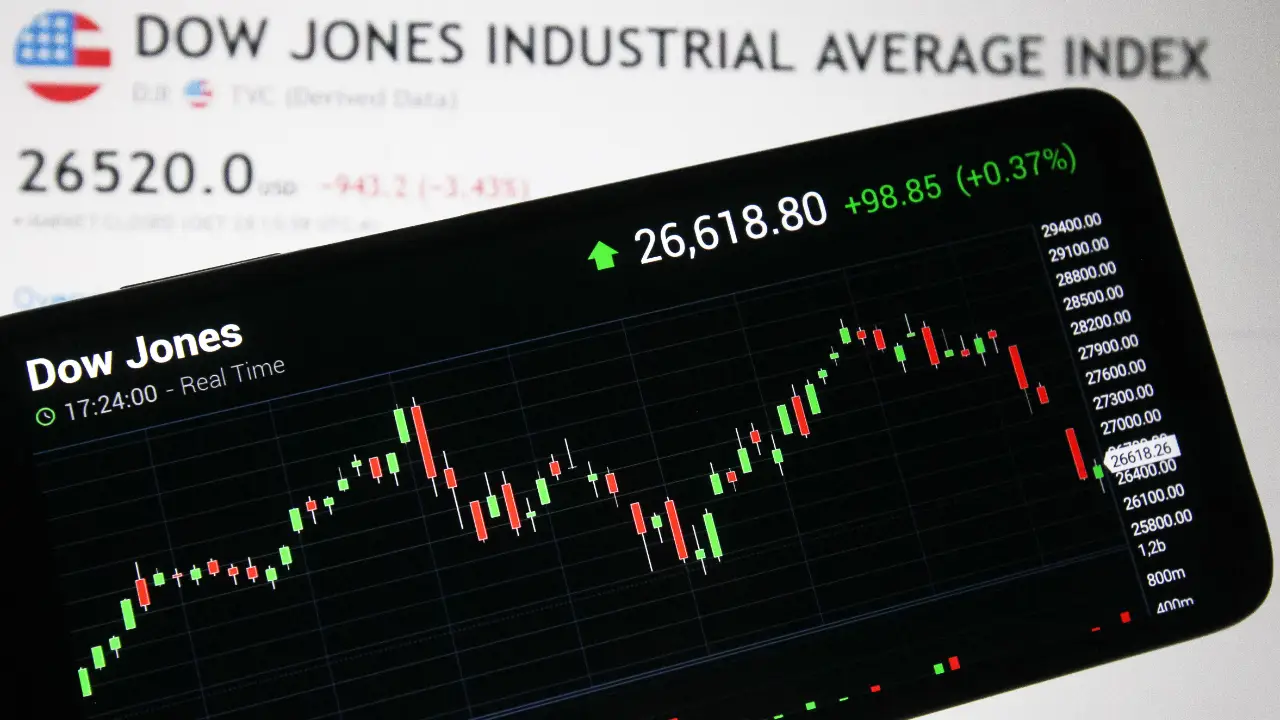
The Dow Jones Industrial Average (DJIA), commonly referred to as the Dow Jones, is one of the most well-known and widely followed stock market indices in the world. First created in 1896 by Charles Dow and Edward Jones, the Dow tracks 30 of the largest and most influential companies in the U.S. stock market. As a barometer for the performance of the U.S. economy, the Dow holds significant sway in the world of finance and has a direct impact on market sentiment globally. In this article, we will take a detailed look at the Dow Jones today, its role in the economy, and how it affects both domestic and global markets.
What is the Dow Jones Industrial Average?
The Dow Jones Industrial Average is a price-weighted index that tracks 30 blue-chip stocks, representing a broad spectrum of American industries such as finance, technology, consumer goods, healthcare, and energy. The Dow is unique because it only includes 30 companies, yet these are considered the market leaders in their respective sectors. A company’s inclusion in the Dow signifies its importance in the overall U.S. economy.
Unlike other indices, such as the S&P 500, which use a market capitalization-weighted approach, the Dow Jones is price-weighted, meaning the stock prices of the companies determine the index’s performance. Therefore, companies with higher stock prices have a larger influence on the movement of the Dow.
Historical Overview of the Dow Jones
Since its inception, the Dow has undergone several changes to reflect the evolving American economy. Initially, the Dow included 12 companies that were primarily industrial—hence the name. Over time, as the U.S. economy shifted from a focus on manufacturing to services and technology, so too did the composition of the Dow.
Some milestones in the Dow’s history include:
- 1896: Dow Jones created with an initial value of 40.94.
- 1929: The stock market crash of 1929 led to the Great Depression, which caused the Dow to drop nearly 90%.
- 1987: “Black Monday” saw the Dow lose 22.6% of its value in a single day.
- 2007-2008: The global financial crisis caused a massive decline, with the Dow losing over 50% from its peak.
- 2020: The COVID-19 pandemic caused one of the fastest declines in the Dow’s history, followed by a rapid recovery thanks to government stimulus and investor optimism about future growth.
How the Dow Jones is Calculated
The Dow Jones is a price-weighted index, meaning the stock prices of its 30 constituent companies determine its value. The Dow’s calculation is relatively simple: it takes the sum of the stock prices of all the companies in the index and divides it by the Dow divisor, a constantly adjusted figure designed to account for stock splits, dividends, and other corporate actions that would otherwise skew the index’s performance.
This methodology differs from other indices, like the S&P 500, which weights companies by their market capitalization. Consequently, the Dow is more sensitive to changes in the price of individual high-priced stocks, meaning that a significant movement in one of the more expensive stocks can have an outsized effect on the index.
Major Components of the Dow Jones Today
As of today, the Dow Jones includes some of the most influential companies in the world. These companies are leaders in various industries and represent a wide spectrum of economic sectors. Some of the current major components include:
- Apple (AAPL): A global leader in consumer electronics, software, and services.
- Microsoft (MSFT): A dominant force in personal computing, cloud computing, and enterprise software.
- Goldman Sachs (GS): A major player in the financial services industry, including investment banking and wealth management.
- Coca-Cola (KO): An iconic brand in the consumer goods sector, specializing in beverages.
- Boeing (BA): A leading aerospace company that manufactures commercial aircraft and defense systems.
These companies, along with others in the Dow, are representative of the most significant sectors in the U.S. economy, ranging from technology and healthcare to consumer goods and finance.
The Dow Jones Today: Current Market Conditions
As of today, the Dow Jones is navigating a period of heightened uncertainty in both domestic and global markets. Factors influencing the Dow’s performance include:
- Interest Rates: The Federal Reserve’s monetary policy, particularly regarding interest rates, has a major impact on stock prices. Rising interest rates can make borrowing more expensive for companies, dampening profits and leading to lower stock prices. Conversely, lower rates tend to support higher stock prices by making borrowing cheaper.
- Inflation: Inflationary pressures are another significant factor influencing the Dow today. Higher inflation erodes purchasing power and can lead to higher costs for businesses, which may squeeze profit margins. The Federal Reserve’s actions to combat inflation through interest rate hikes have also caused fluctuations in the Dow’s performance.
- Global Economic Conditions: International factors, such as geopolitical tensions, supply chain disruptions, and foreign exchange fluctuations, affect the Dow’s performance. Recent tensions between global superpowers, coupled with economic slowdowns in key regions like Europe and China, have weighed heavily on investor sentiment.
- Corporate Earnings: The Dow’s performance is closely tied to the earnings reports of its constituent companies. Strong earnings tend to push stock prices higher, while disappointing results can drag the index down. As companies release quarterly reports, their performance can significantly impact the index.
The Dow Jones and Investor Sentiment
The Dow Jones is often viewed as a reflection of investor sentiment toward the U.S. economy. When the Dow rises, it typically signals optimism about economic growth and corporate profitability. Conversely, a declining Dow may indicate concerns over economic downturns, rising interest rates, or geopolitical risks.
Investors around the world closely monitor the Dow as an indicator of market conditions. A strong performance in the Dow can inspire confidence in global markets, while a sharp decline may lead to widespread sell-offs in other indices. For example, a poor trading session in the Dow often reverberates through international markets, causing fluctuations in the FTSE 100, Nikkei 225, and other global indices.
Dow Jones vs. Other Major Indices
While the Dow is one of the most well-known stock market indices, it is not the only one. Other key indices include:
- S&P 500: Tracks 500 of the largest companies in the U.S. and is considered a broader representation of the U.S. stock market than the Dow.
- Nasdaq Composite: A tech-heavy index that includes over 3,000 stocks, primarily from the technology and biotech sectors.
- Russell 2000: An index tracking 2,000 small-cap stocks, offering insights into the performance of smaller companies in the U.S. economy.
Each of these indices provides different insights into the market, but the Dow’s relatively small number of constituents and price-weighted methodology make it unique.
The Dow’s Influence on Global Markets
Because the Dow Jones Today represents some of the largest and most influential companies in the world, its movements often ripple through global markets. A significant rise or fall in the Dow can affect investor sentiment in markets as far-flung as Europe and Asia. For example, a major drop in the Dow due to poor corporate earnings or unexpected economic data can trigger sell-offs in other regions, affecting indices such as the DAX, CAC 40, and the Hang Seng.
Additionally, because many of the companies in the Dow have significant global operations, factors that affect the Dow often have international ramifications. For example, U.S. trade policies, geopolitical developments, or economic sanctions can all impact multinational corporations within the Dow, creating ripple effects in foreign markets.
Conclusion: The Dow Jones Today and Its Broader Impact
The Dow Jones Industrial Average remains one of the most important indicators of U.S. economic health and market performance. Today, the Dow continues to navigate a complex landscape shaped by rising interest rates, inflationary pressures, and global economic uncertainties. Its performance not only reflects the fortunes of its constituent companies but also serves as a proxy for investor sentiment on the broader economy.
For investors, understanding the Dow’s movements and the factors that influence its daily fluctuations is crucial to making informed investment decisions. As the global economy continues to evolve, the Dow Jones will remain a key focal point for gauging market trends and anticipating future economic developments.








